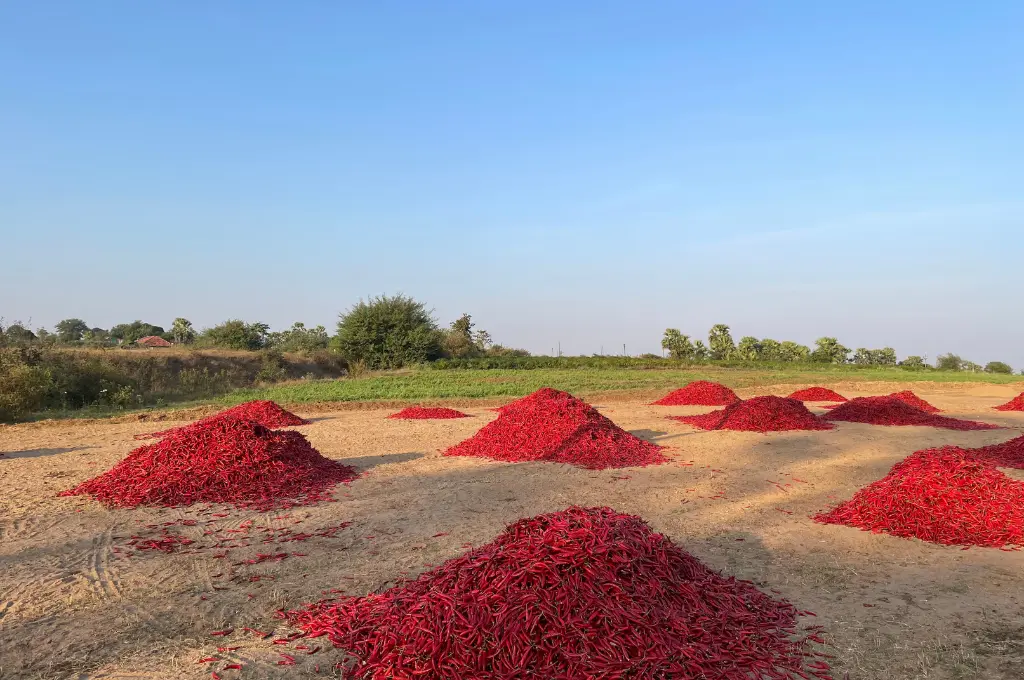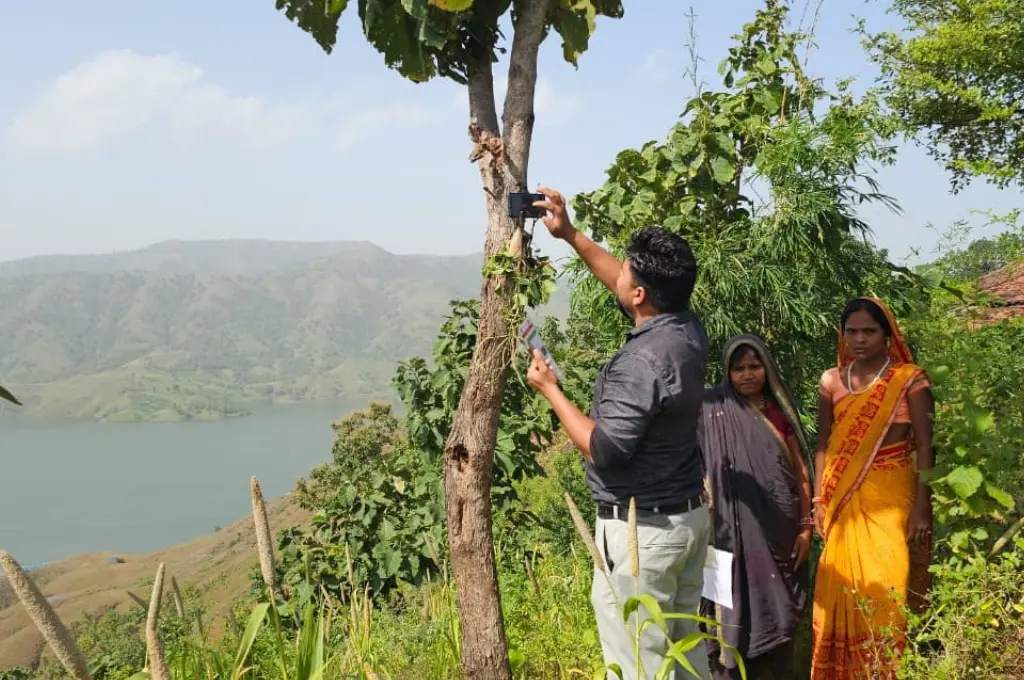READ THIS ARTICLE IN
The promise and perils of chilli farming for the tribes in Telangana

In 2025, as part of a research programme at PRADAN, we visited several villages in Mulugu district and Nagarkurnool district in Telangana. These villages are home to a significant population of Scheduled Tribes, such as the Koya and Nayakpodo communities, and particularly vulnerable tribal groups, such as the Chenchu community. Most households either own very small parcels of land or are landless.
Apart from cotton cultivation that has its own issues, the entire economy is built around chilli cultivation. For 1 acre of chilli farming, farmers invest approximately INR 1 lakh in seeds, water, land preparation, fertilisers, pesticides, and harvesting. Small and marginal farmers often take loans from moneylenders at an interest rate of 3 percent per month. They also have to sell their harvest to these moneylenders as it is the easiest way for them to repay the loan with interest.
A few years ago, chilli would fetch a price of INR 35,000 per quintal, helping farmers make a profit. However, over the last two years, the price has dropped to INR 6,000–7,000 per quintal, resulting in heavy losses. Meanwhile, moneylenders have continued to earn a 36 percent annual profit on their investments through interest alone.
When asked why they do not stop cultivating chilli, farmers explain that if a significant number of them give it up, chilli prices might rise, benefitting those who continue cultivating. So, everyone is waiting for others to drop out. Additionally, they are hoping for an external factor to drive up chilli prices.
Years of cotton and chilli cultivation have also killed the traditional practices that were once considered alternatives. Large-scale chilli and cotton cultivation has negatively impacted the livelihoods of communities such as the Chenchus, who depend on non-timber forest products. Chenchus traditionally collect honey from the forest, but the widespread use of pesticides in chilli and cotton fields has led to a significant decline in the bee population. As a result, the amount of honey they used to collect—approximately 30 quintals per year a decade ago, according to a villager from a Chenchu village in Amrabad—has now reduced to just 3–4 quintals annually. Furthermore, villagers state that the random installation of borewells, due to chilli being an irrigated crop, has depleted the groundwater table. The reality now is that the communities in these areas have no freedom to cultivate anything other than cotton or chilli.
Avinash Kumar and Dibyendu Chaudhuri work in the Research and Knowledge Management unit at PRADAN.
—
Know more: Learn why the tea garden workers in West Bengal are seeking other livelihood options.
Do more: Connect with the authors at dibyendu@pradan.net or avinashkumar@pradan.net to learn more about and support their work.



